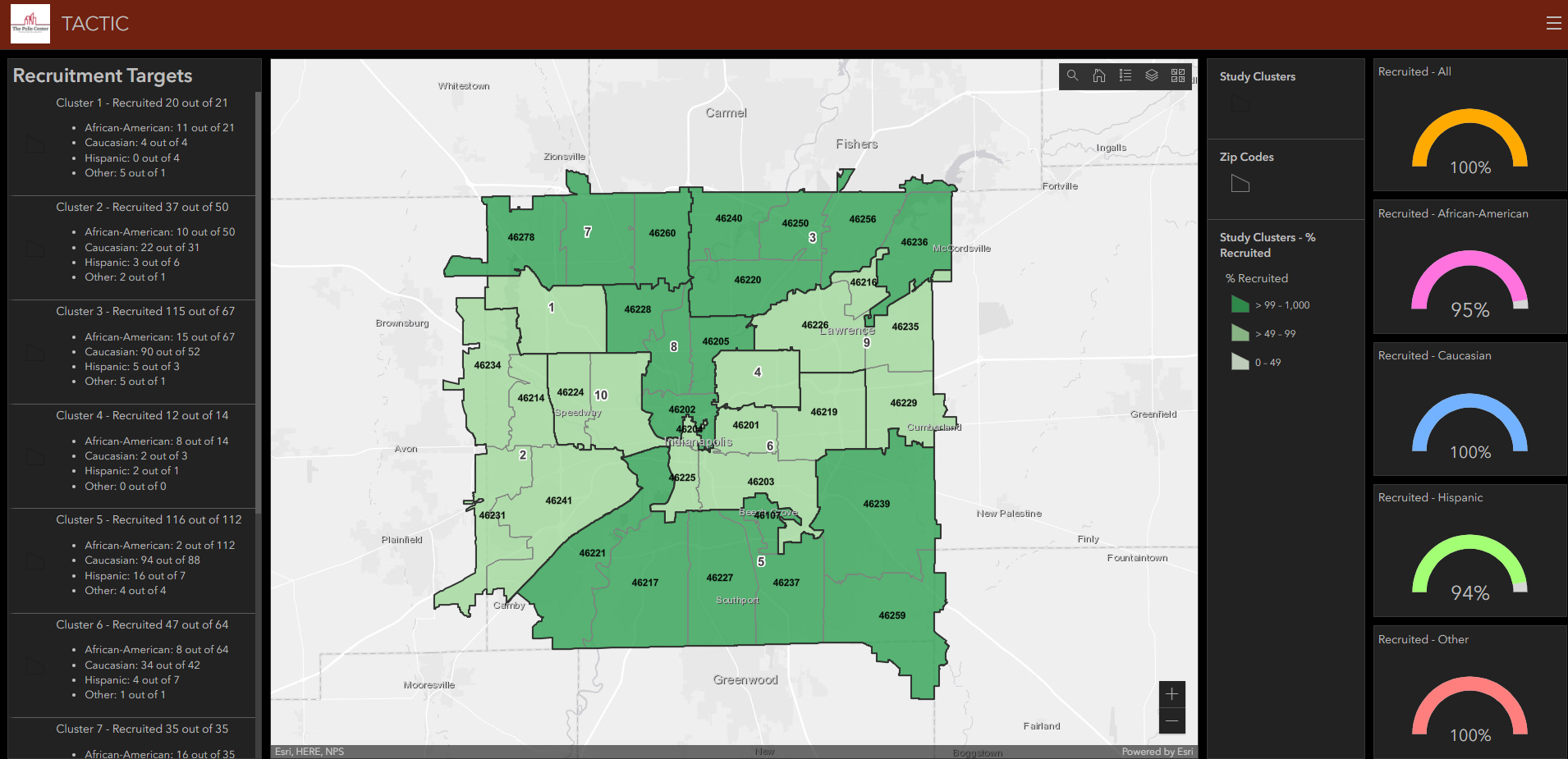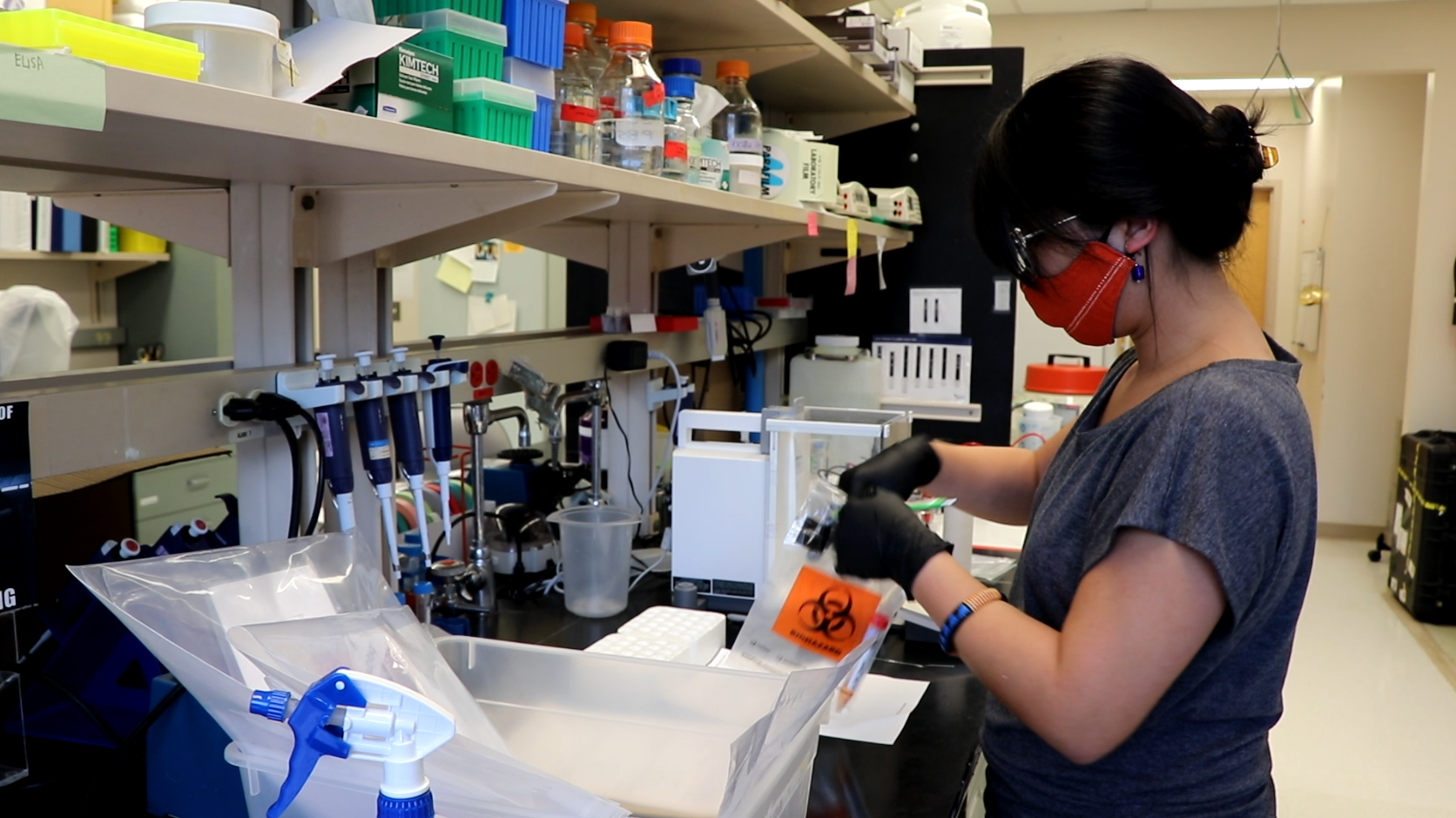
SAVI helps IU researchers understand COVID-19’s spread
Our Partner
IU School of MedicineDownload
The Challenge
9.20.2020
Researchers at the IU School of Medicine needed representative samples of several Indianapolis-area ZIP codes for a study of COVID-19.
The Solution
SAVI analysts provided demographic analyses of the relevant ZIP codes and created an online dashboard to measure how well volunteer pools mirrored the demographics of those ZIP codes.

The Process
Understanding how COVID-19 spreads is a top priority for medical and public health professionals around the globe. SAVI has played a key role in a local study focused on the role of asymptomatic infections.
The study—known as TACTIC (Tracking Asymptomatic COVID-19 Through Indianapolis Communities)—tested about 500 volunteer participants. Roughly, a fourth were children, which makes TACTIC the first community study in the U.S. to analyze COVID-19 infection in both children and adults.
“It really started with us, as pediatricians, wanting to understand how COVID-19 was being spread through the community—especially asymptomatic infections,” says Dr. James Wood, assistant research professor of pediatrics at the IU School of Medicine. The other lead researcher, Chandy John, is Ryan White Professor of Pediatrics at the School. Both doctors care for patients at Riley Children’s Hospital in Indianapolis.
To carry out the study, the researchers needed samples of the population that mirrored, as closely as possible, the demographic makeup of several selected “ZIP code clusters.” To do that, they needed to know the demographics of those ZIP codes.
That is where The Polis Center comes in. Because of COVID’s deadly, rapid spread, “there wasn’t time to do a randomized, controlled trial,” says Karen Comer, director of collaborative research and community health informatics at Polis. “So the question was, what can we do quickly and with available resources?”
SAVI data manager Jay Colbert put together a demographic analysis of the relevant ZIP codes, and GIS project coordinator Marianne Cardwell created an online dashboard with regularly updated information on the relative demographics of the recruited study participants. That way, researchers knew exactly how close they were to having representative samples of the populations.
“That was a key piece for us to get the study up and running in a short amount of time,” Wood says. “Without the Polis Center, we would not have been able to capture the demographics we wanted, and we would not have been able to get the study done as quickly as we did.”
“Without The Polis Center, we would not have been able to capture the demographics we wanted, and we would not have been able to get the study done as quickly as we did.”
Dr. James Wood
Assistant Research Professor of PediatricsIU School of Medicine
The findings have not yet been published, but “what we found is that the number of people with asymptomatic infection is pretty low, especially among kids,” Wood says. “But even a low percentage of infected people with no symptoms can have a big impact on how it spreads. And we need to be mindful—especially as schools open—that people can have COVID before they show symptoms.”
Wood notes that collaborative efforts like TACTIC are essential, early building blocks in responding to COVID. “One of the bigger takeaways is that we need more studies like this, especially in children and vulnerable populations,” he says. “This sets the stage for and informs the way we’ll do future studies, so that we can get to the question of: How do we prevent the spread of infection in our communities?”
For example, a proposed follow-up study, currently in the approval process, will look at the same populations but test participants for antibodies—that is, evidence of past COVID infection. That will help researchers better understand its long-term effects.
In addition to collaborating on TACTIC, The Polis Center is contributing to other efforts to control—and treat—COVID-19. For example, Polis is in the early stages of collaborating with several local institutions on developing a stronger community health workforce in Indiana.
Community health workers (CHWs) build trust among vulnerable populations by conducting community outreaches and talking about prevention. The journal Health Affairs recently called the public health system, including CHWs, “a critical firewall to reduce community spread of COVID-19 and to relieve the unsustainable pressure the U.S. healthcare system is experiencing as a result of the pandemic.”
CHWs provide “a great return on investment,” Comer says. “So, how do we set up a system in Marion County that creates and sustains that workforce?”
The pandemic has given urgency to that question—and many more. Polis, working with its partner institutions, will continue providing insights that drive data-informed decisions over the coming months and years.
